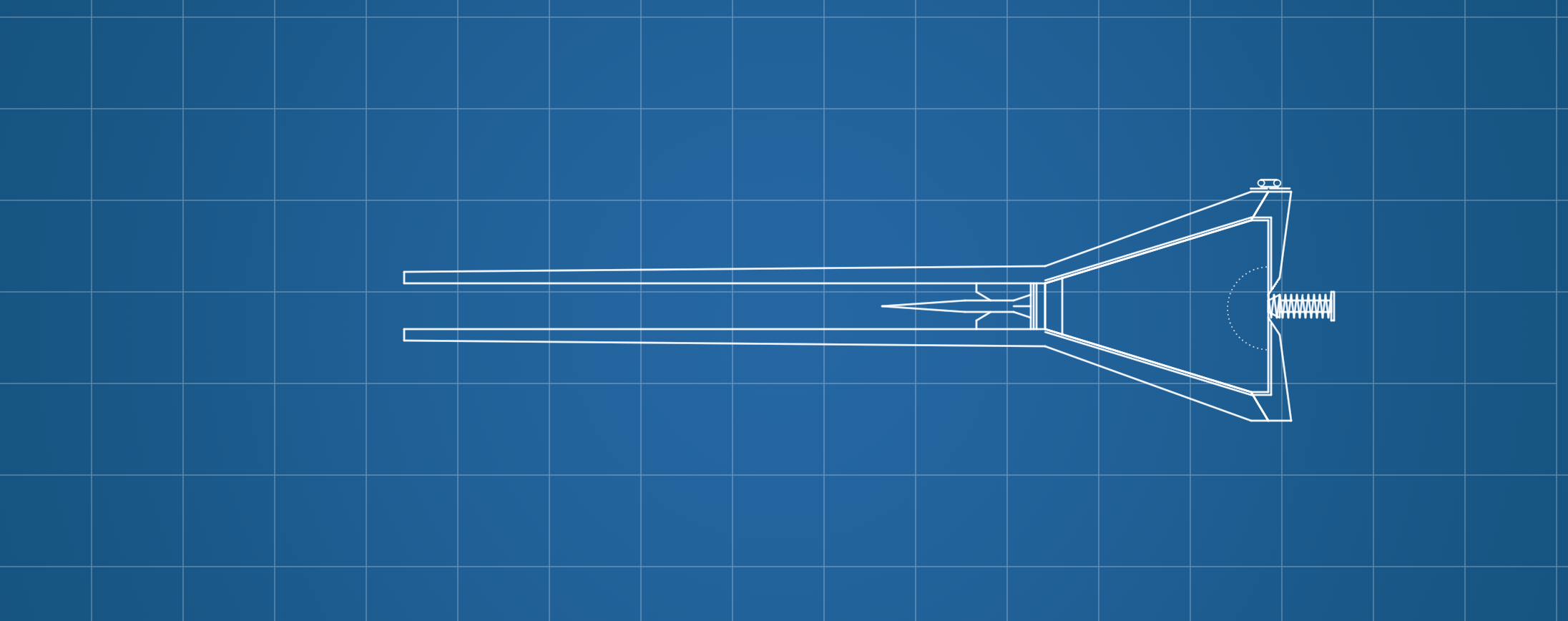Magitech Weaponry
Invention Patent Proposal for Defense Contract #72
Oppia Semina, Department of Chuubanitic Engineering
Ryuka Lokeedus
Department Dean
Semina Professor of High Energy Applied Chuubanitics
Island of /Calliope Mori/
Summer, 1097 VTE
To Midori Hakus
Black Fleet HQ
Memento
Moriji
Dear Midori Hakus,
Herein this document is communicated to you the latest advance in weaponry technology to have been developed in the Oppia Semina laboratory of HEAC.
This proposal fulfills the requirements laid out in the Black Fleet's open contract "Defense Contract #72: Advanced gunpowder-free ballistic platforms".
This device comprises the following components.
- A smoothbore barrel between 6 and 12 centimeters in diameter.
A conical cavity with a minimal diameter equal to the barrel diameter and a maximal diameter no more than 5 times the barrel diameter. This cavity is jacketed with chuubanite-reflecting lead. - A hinged breech on the weapon's butt.
A conical chuubanite infused component matching the geometry in 1.
This component comprises two materials. Its bulk is composed of a composite of cement and powdered quartz, in proportions such that the materials bulk chuubanitic capacity is sufficient. The tip of the truncated cone is made with a pure quartz crystal, for increased strength and chuubanitic capacity. The whole component is backed with a layer of lead.
A large extension spring attached to a hammer and a handle. The hammer has a layer of powdered red corundum adhered to its contact surface.
A shell to be used with the device has the following components.
- A hardened steel bolt, similar to those used in a crossbow, but larger and longer.
- A metal plate.
- A porous pellet of chuubanite-infused clay.
- A sabot of fragile low density cement molded around the bolt.
The following is a breakdown of the device's action. See attached diagrams for further visualization.
- The shell is loaded into the canon through the opened breech.
- The breech is closed.
- An operator pulls back the sprung hammer. This may be done by hand, or through a mechanism depending on the implementation of the device.
- The hammer is released and strikes the base of the chuubanitic cone (Now referred to as the anvil).
- At the point of impact, the corundum coating the hammerhead comes into contact with the chuubanite. Corundum is an activator substance for Mori-type chuubanite.
- Where the activator contacts the chuubanite, two waves are emitted. A vibration begins to travel through the solid chuubanite, as would a sound wave traveling through a room. The amplitude of this wave is correlated with the strength with which the hammer struck the anvil. The second wave is in the Vitium field. As the first wave travels through the material with a constant amplitude, the chuubanite is activated and add energy to the Vitium Field wave or Vitium Field Excitation (VFE).
- The VFE bounces on the lead jacket around the anvil and is directed and focused towards the smallest diameter of the truncated cone.
- The VFE enters the shell and the clay pellet at its base.
- Once the VFE exits the chuubanite, it is forced to convert its energy into momentum, heat, and light.
- Much of the energy is converted into momentum and transfered to the metal plate. The heat, light and stress disintegrate the clay pellet and propel all the components of the shell down the bore.
- The heat and light cause some gas expansion within the barrel, but the majority of the momentum is created by the initial momentum transfer.
- Once the shell components exit the barrel, the cement sabot disintegrates, as the bore's surface prevented it from collapsing during the acceleration. The metal plate slows down quickly while the bolt continues on a high velocity ballistic trajectory.
The lower peak pressure achieved in this device relative to a comparable gunpowder canon means the barrel wall do not require as much material, resulting in significant weight savings. The rounds that can be used here also result in greater range and armor penetration.
However, the device has major drawbacks. First and foremost, large amounts of chuubanite are required for both its construction and operation. The chuubanite clay component is completely destroyed while firing, reducing wear and tear on other components, but increasing ammunition cost. The quartz crystal is also put under high stress and chuubanite consumption. On the prototype developed and tested within the context of this proposal, it should be replaced every fifty firings. The bulk material of the anvil is minimally stressed, but will require being re-infused with chuubanite every five hundred firings. Moreover, while the bolt's armor penetration capability is impressive, the damage it deals to softer targets in much lower than an equivalent cannonball round due to overpenetration.
Oppia University looks forward to the Black Fleet assessment of this invention, and hopes it sees its potential as we did.
Best regards,
Ryuka Lokeedus
Meta:
Did you just invent sabot rounds two hundred years early?
No, the first sabot rounds were invented in 1826 by Henri-Gustave Delvigne and do not require anachronistic technological knowhow, just thinking of it.
Did you just invent flechette rounds two hundred years early?
No, as mentioned in the text, flechette rounds are practically scaled-up crossbow bolts, the real innovation of 20th century flechette rounds is using high tech self-sharpening materials such as tungsten carbide and depleted uranium for them.
Is this unbalanced?
Due to the cost of fabrication and operation, and reduced utility on softer targets, these guns do not make conventional cannons obsolete, but rather fill a different niche in warfare, in my opinion. Due to the magical nature of their operation, the exact magnitude of their benefits can be tuned so as to not imbalance warfare while still bringing something new to the table.
